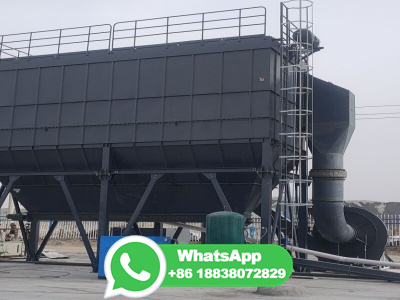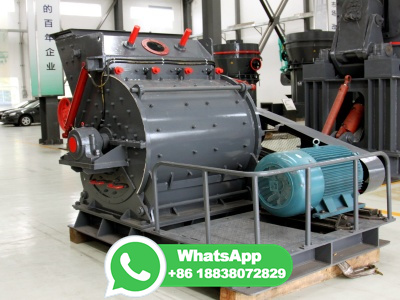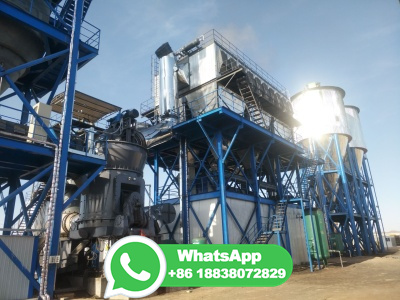
Benefits. Countries with abundant coal resources (such as the US and China) benefit from this conversion, as it can help reduce reliance on imported liquid fuels. It also offers the potential to economically produce hydrogen.. Carbon capture and storage can be integrated into the process, and biomass can also be incorporated to further reduce the CO2 footprint while taking advantage of the ...
WhatsApp: +86 18037808511
But there are two flaws with turning coal into oil, beyond its cost. First, it takes a lot of energy to loosen up the carbon bonds in coal. Second, all that energy use results in the emission of a ...
WhatsApp: +86 18037808511
Hydrocracking was first developed in Germany as early as 1915 to obtain liquid fuel from coal deposit. The first plant that might be considered as a commercial hydrocracking unit began in Leuna, Germany in 1927. ... Those processes involve the chemical process of thermal cracking or the splitting of large hydrocarbons molecules into smaller ...
WhatsApp: +86 18037808511
4 Liquefaction. Coal liquefaction is the process of making a liquid fuel from coal. The fundamental difference between coal, a solid, and liquid fuels is that the liquid fuels have a higher hydrogen:carbon ratio. Liquid fuels have lower ash contents and are easier to upgrade (, to remove unwanted impurities such as nitrogen and sulfur).
WhatsApp: +86 18037808511
Conversion: Gas oil into petrol. Catalytic cracking is aided by adding hydrogen gas during the hydrocracking process. The CC bonds are broken down using it. The major products from this process are diesels, jet fuel, and LPG. It is based on the fusion of two distinct processes known as catalytic cracking and hydrogenation.
WhatsApp: +86 18037808511
Liquid fuels produced from the catalytic cracking process was analyzed using a GCMS, in which the analysis results indicated that liquid fuels were included into the gasoline fraction. Keywords ...
WhatsApp: +86 18037808511
Coal Liquefaction is the process of converting coal to liquid fuels. What is Coal Liquefaction? The process of coal liquefaction creates synthetic liquid fuels from solid as substitutes for various petroleum products. There are two types of liquefaction direct and indirect .
WhatsApp: +86 18037808511
Gasification. is the thermochemical process of converting a solid carbonaceous source such as. coal or biomass into synthesis gas (CO + H 2) which is used as a. feedstock for producing fuels and chemicals. Gasification, generally done in. the presence of mixtures of air/pure oxygen and steam at temperatures ranging.
WhatsApp: +86 18037808511
Converting oil shale into liquid fuels is a solution to the shortage of crude oil in China. However, the competitiveness of oil shaletoliquid (STL) fuel conversion are affected by fluctuations in the price of crude oil. Thus, a comprehensive comparison between STL and oil refining processes is urgently needed.
WhatsApp: +86 18037808511
FischerTropsch plants associated with biomass or coal or related solid feedstocks (sources of carbon) must first convert the solid fuel into gases. These gases include CO, H 2, and alkanes. This conversion is called gasification. Synthesis gas ("syngas") is obtained from biomass/coal gasification is a mixture of hydrogen and carbon monoxide.
WhatsApp: +86 18037808511
The method used to convert LRC into liquid fuel is direct coal liquefaction (DCL), which generally requires maximum temperature, pressure, and use of catalysts and solvents [5]. Coal can be converted into liquid hydrocarbons through indirect coal liquefaction (ICL) through gasification to syngas and the FischerTropsch (FT) process [6], [7], [8].
WhatsApp: +86 18037808511
The biomass derivatives have been selected in view of their potential to produce liquid hydrocarbon fuels. First, we will describe the catalytic route designed to convert glycerol into liquid hydrocarbon fuels. This route involves the integration of two processes: aqueousphase reforming (APR) of glycerol to syngas and FT synthesis.
WhatsApp: +86 18037808511
Direct coal liquefaction residue (DCLR) is a byproduct of coaltoliquid technology when raw coal is converted into liquid fuel, which is harmful to the ecological environment and human can be developed into a road asphalt modifier via different techniques, that can improve and enhance asphalt performance. In this paper, the global research status of DCLR in asphalt pavement is ...
WhatsApp: +86 18037808511
Indirect liquefaction involves the gasification of coal followed by the catalytic conversion of the product gas to a liquid. Pyrolysis liquefaction involves heating coal to very high temperatures, thereby cracking the coal into liquid and gaseous products. Solvent extraction uses a solvent generated within the process to dissolve the coal and ...
WhatsApp: +86 18037808511
The classification of fuels derived from lignin comprises (i) solid fuels, (ii) liquid fuels, and (iii) gaseous fuels and the various processes or methods carried out over the last few decades in the valorization of lignin feedstock into the specific fuel types are also explored. Overall schematic classification of lignin conversion into the ...
WhatsApp: +86 18037808511
Coaltoliquids (CTL): The conversion of coal to liquid fuels and/or chemicals. Coprocessing (of coal): The simultaneous conversion of coal and waste carbonaceous feedstocks such as petroleumbased residual oil or tar, plastics, or rubbers via oncethrough direct liquefaction into liquid, solid, and gaseous hydrocarbonaceous materials intended primarily for use as fuel
WhatsApp: +86 18037808511
• Indirect liquefaction begins with coal gasification: the conversion of coal to synthesis gas (a mixture of CO and H 2). • In a separate processing step, the synthesis gas is converted to liquid fuels. • Indirect liquefaction is the dominant coaltoliquids technology today. provides ≈40% of South Africa's liquid fuel
WhatsApp: +86 18037808511
The process that converts solid coal into liquid hydrocarbon fuel is called: (a) ... Carbonation(c) Catalytic conversion(d) Cracking. 16. Lignite, bituminous and anthracite are different ranks of: (a) Nuclear fuel (b) Coal (c) Natural gas ... Resources that take too long a period of time to be used as a resource are called as a. Renewable ...
WhatsApp: +86 18037808511
Gasification is a technological process that can convert any carbonaceous (carbonbased) raw material such as coal into fuel gas, also known as synthesis gas (syngas for short). Gasification occurs in a gasifier, generally a high temperature/pressure vessel where oxygen (or air) and steam are directly contacted with the coal or other feed material causing a series of chemical reactions to ...
WhatsApp: +86 18037808511
Coal liquefaction is a process of converting coal into liquid hydrocarbons: ... any produced liquids are mostly a byproduct and the main product is semicoke a solid and smokeless fuel. The COED Process, ... while the main disadvantages are high gas yield (this is basically a thermal cracking process), high hydrogen consumption, and ...
WhatsApp: +86 18037808511
A solid fuel formed primarily from the remains of trees, ferns, and other plant materials preserved 280 ... The process of converting solid coal into liquid fuel. Energy intensity. The energy use per unit of gross domestic product. ... Cationic coagulants neutralise the negative charge of colloids and form a spongy mass called microflocs. These ...
WhatsApp: +86 18037808511
This process is called pyrolysis or devolatilization of coal. Coal is also converted into liquid fuel either directly or indirectly, via liquefaction [52]. Direct coal liquefaction, industrialized ...
WhatsApp: +86 18037808511
liquids. Because the coal is first gasified before conversion to liquid fuels, the FischerTropsch (FT) process for CTL is known as a type of indirect coal liquefaction (ICL). ICL is a completely different approach from DCL for providing liquid fuels from coal. ICL processes first convert coal to a gaseous intermediate, which is then ...
WhatsApp: +86 18037808511
Liquefaction is the process of converting solid coal into liquid fuels. The main difference between naturally occurring petroleum fuels and coal is the deficiency of hydrogen in the latter: coal contains only about half the amount found in petroleum. Therefore, conversion of coal into liquid fuels involves the addition of hydrogen.
WhatsApp: +86 18037808511
High temperature cracking is the process of converting large molecules into small molecular compounds, but it requires high equipment, more energy consumption, and easily blocks pipelines. 8−10 Through hydrocracking, coal tar can obtain gasoline, diesel oil, kerosene, and other distillate fuels.
WhatsApp: +86 18037808511
Coal liquefaction is the process of converting solid coal into liquid fuel. This process has been developed as a means to utilize coal resources that are otherwise difficult to access and transport. The resulting liquid fuel, called synthetic crude oil, can be refined into a variety of fuels, including diesel, gasoline, and aviation fuel.
WhatsApp: +86 18037808511